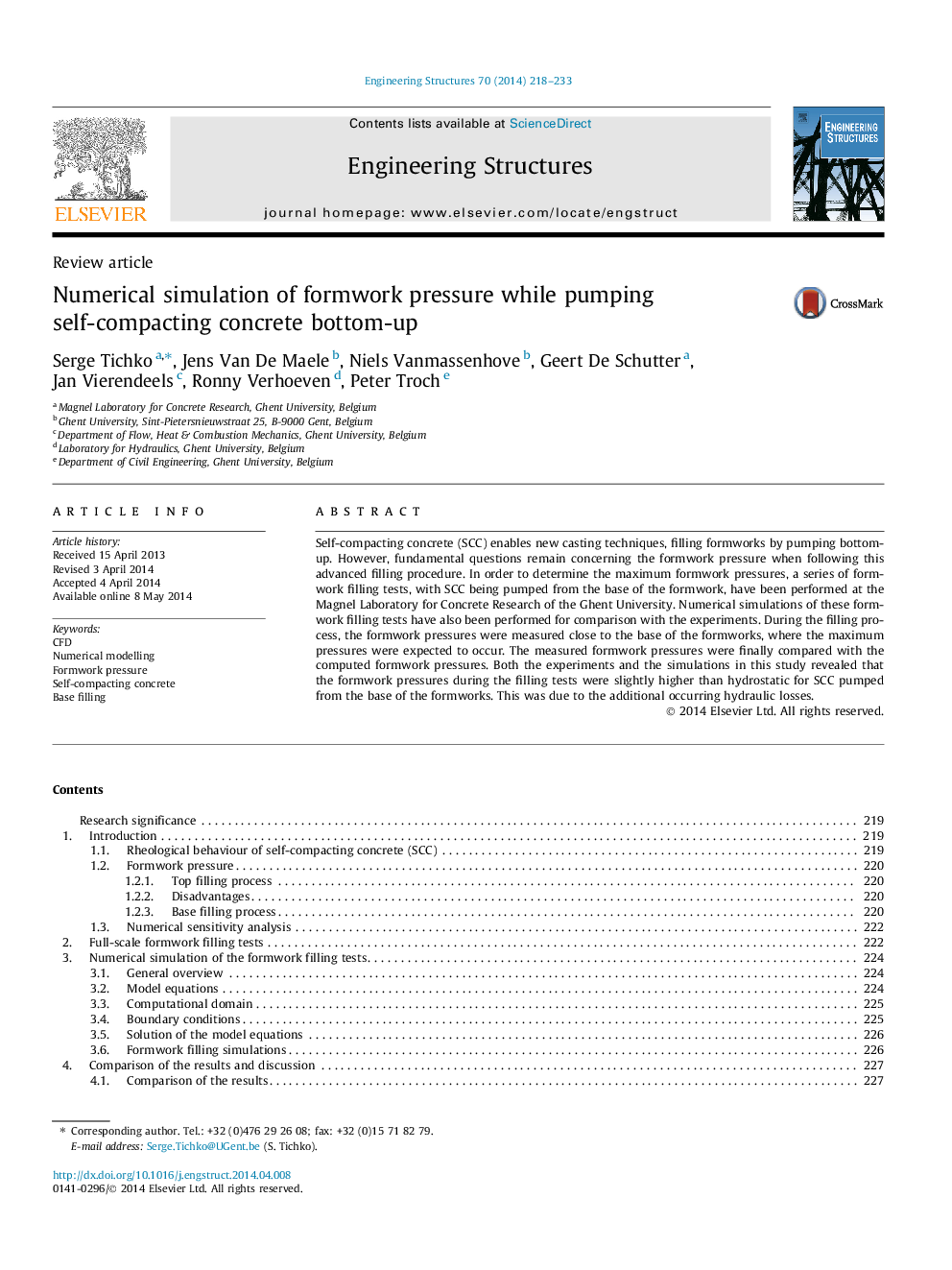| Article ID | Journal | Published Year | Pages | File Type |
|---|---|---|---|---|
| 266711 | Engineering Structures | 2014 | 16 Pages |
•We filled formworks with SCC pumped bottom-up and performed CFD simulations.•Formwork wall pressures were measured and computed.•The formwork pressures were higher than hydrostatic due to the flow losses.•The effect of thixotropy on the formwork pressure can be neglected in our tests.•The rheology of the SCC is strongly related with the in situ formwork pressures.
Self-compacting concrete (SCC) enables new casting techniques, filling formworks by pumping bottom-up. However, fundamental questions remain concerning the formwork pressure when following this advanced filling procedure. In order to determine the maximum formwork pressures, a series of formwork filling tests, with SCC being pumped from the base of the formwork, have been performed at the Magnel Laboratory for Concrete Research of the Ghent University. Numerical simulations of these formwork filling tests have also been performed for comparison with the experiments. During the filling process, the formwork pressures were measured close to the base of the formworks, where the maximum pressures were expected to occur. The measured formwork pressures were finally compared with the computed formwork pressures. Both the experiments and the simulations in this study revealed that the formwork pressures during the filling tests were slightly higher than hydrostatic for SCC pumped from the base of the formworks. This was due to the additional occurring hydraulic losses.
